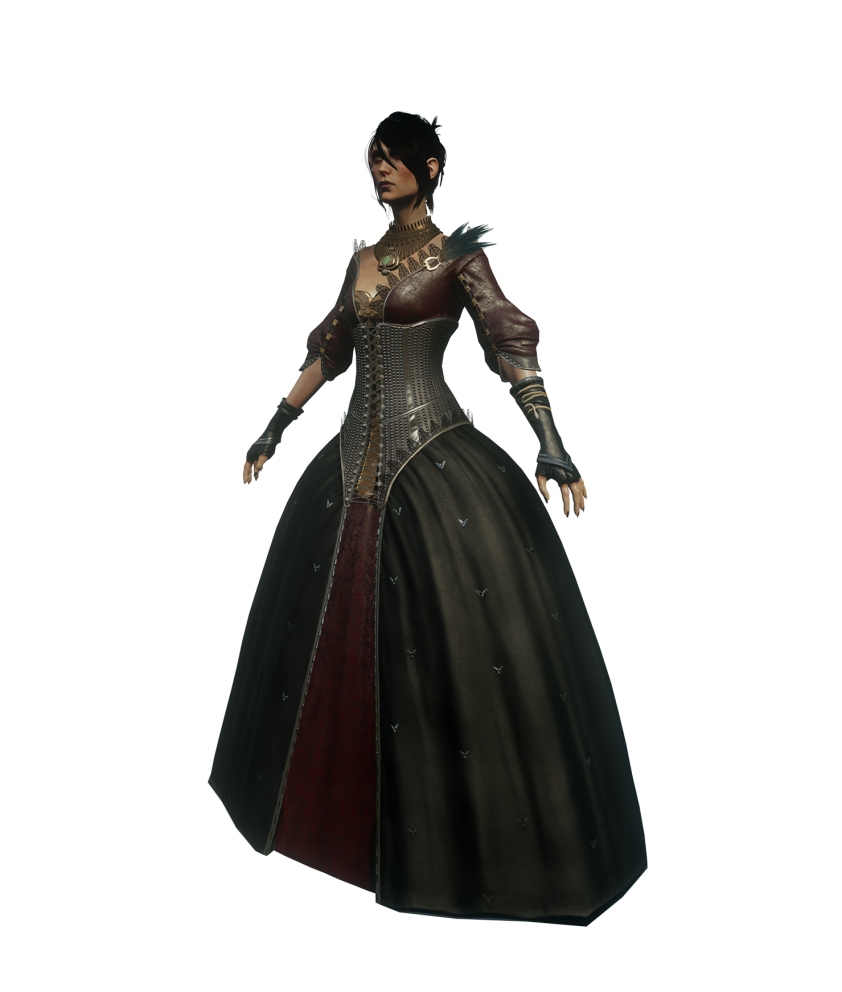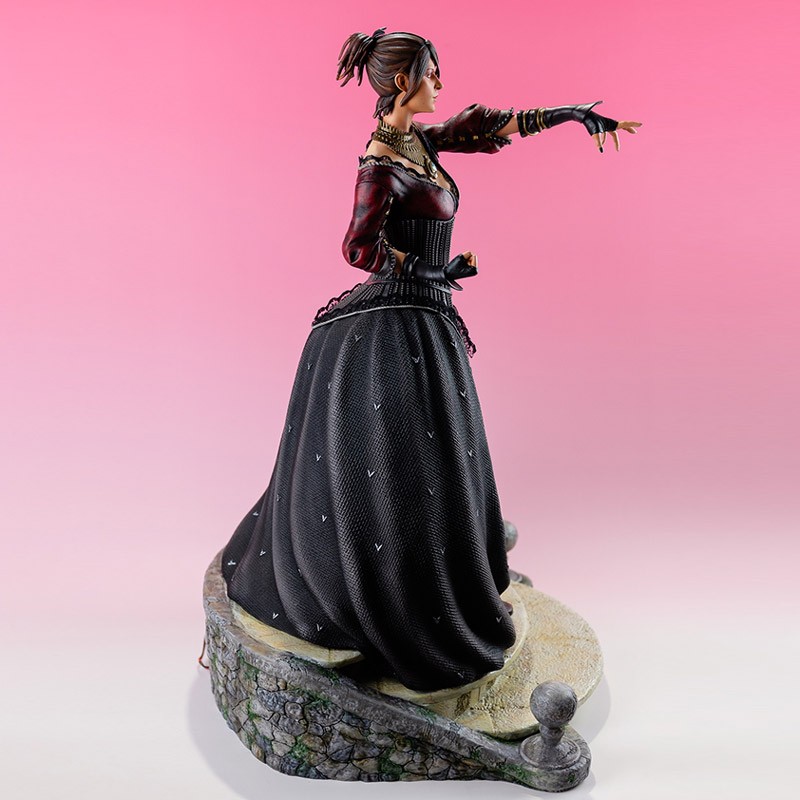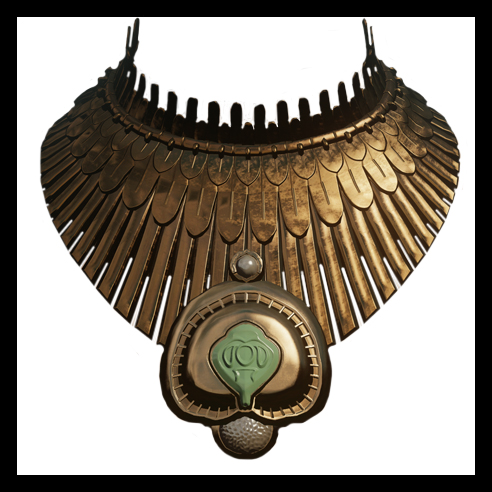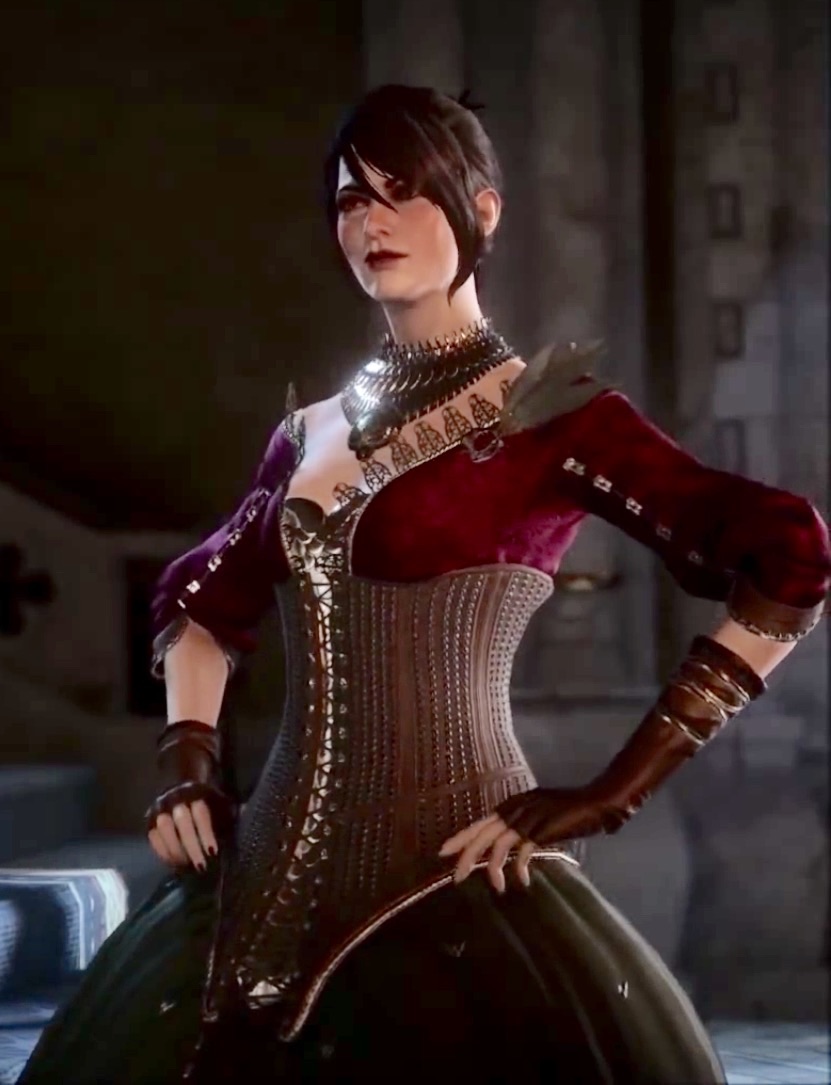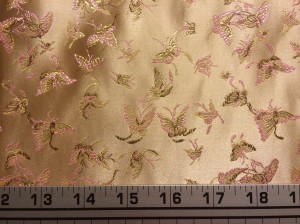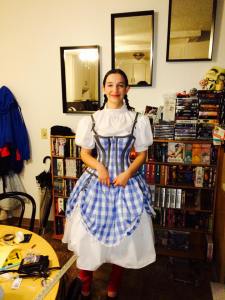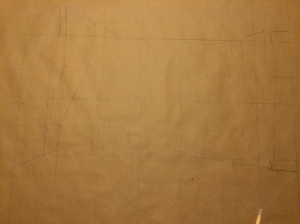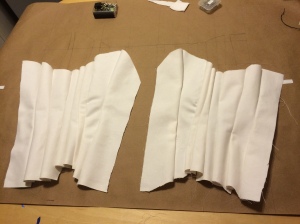Another pretty intense make here, although unlike the crinoline I have at least made a corset before. The trickier thing is that this should be made of leather which I’ve never really used before. I also haven’t decided if I’m going to go with real leather or imitation. Imitation will be significantly cheaper (by at least a factor of 8 or so) and I wouldn’t have to worry about non-matching dye lots but real leather would be nicer and feel more correct.
Pattern-wise I’m thinking of using this drafting method with a couple of inches taken out of centre front and added to centre back to allow for the closed back/front laced design. In one of those “games don’t have to worry about physics” issues, the front point seems too long to be able to actually sit down in so I’ll mess around with the mockup to see how long I can reasonably make it without impaling every chair I try to sit on. The back point should be less problematic as it doesn’t seem like it’s that long and it doesn’t go straight down but should push out over the skirt.
Construction-wise I think I’ll do 3 layers, an outer leather layer, middle strength layer and then an inner lining. I’d like to try using coutil for the strength layer just to see what it’s like but as with using real leather I’m not sure if this is the place to go that extra mile.
The next issues is the studs. Over and above how long it’s going to take to get all of them on there, is how do I get them on there. I could do spots, but those attach with prongs you have to bend down, and I’m a bit worried that if I don’t get every one down exactly right I end up stabbing myself. I’m planning on 2 layers of fabric in the corset behind the leather but still. And even if it doesn’t stab me I don’t want it wearing thorough the inner fabric either.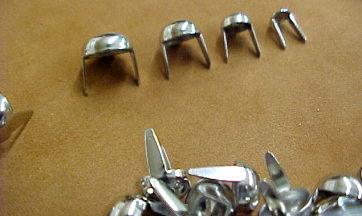
The other option is domed rivets but my worry with those is that the shank will be too long for just going through one layer of garment weight leather.
Last issue is the front lacing which doesn’t have grommets so much as mystery cup things.

I think I want to try using boot hooks for this which should give a similar effect and I think make it a bit easier to lace.


